Hand therapy
What are your flexor tendons and why have these been repaired?
The large muscles on the front of your forearm are attached to tendons that cross the wrist. These tendons attach on to the bones of your thumb and they are responsible for bending different joints in your thumb. They are important in allowing you to bend your thumb during activity and are essential in allowing you to function normally.
Your tendon/s has been repaired to restore this normal function and you will need to undergo a strict hand therapy programme following this surgery to optimise your recovery and functional use of your hand.
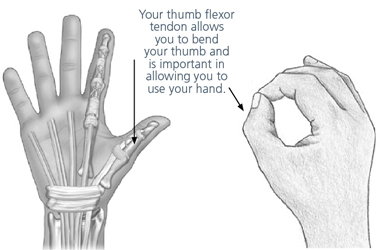
What might I expect following surgery?
Your tendon has been repaired with complex microsurgery and will need strict care to limit the possibility of re-injury of your repaired tendon (rupture).
You will normally be seen by our hand therapy team within a few days of your surgery and then on a regular basis following this. You will not be able to use your hand for any activity, for example; gripping or lifting until at least eight weeks after your surgery.
Why is it important to protect my repaired tendons?
The repair will be weak and will require protection in a thermoplastic splint to prevent movements and activity that will risk rupturing your tendon.
This lightweight splint will be moulded to your hand by a hand therapist and is to be worn 24 hours per day for the first 6 weeks. Following this for a further two weeks you will be allowed to remove your splint indoors, however you will need to continue wearing your splint whilst sleeping and if in crowded places while your tendon continues to heal.
Important
While wearing your splint you will need to check your skin for red or sore areas and inform your therapist if you have any concerns.
Do not place your splint in hot water or near a heater as this will affect its shape or fitting and result in the splint becoming uncomfortable to wear.
Your arm and splint will need to be covered with a plastic bag when showering or bathing (please do not remove your splint).
Why is it important to look after my wound and scar?
Following surgery it is important that you keep your dressing dry to avoid problems with your wound. Normally your stitches will be removed 10 to 14 days following your surgery.
Once your wound is fully healed you will be shown how to use vasoline or an oil (such as sweet almond oil) to massage your scar. This will help prevent any excess scar tissue from causing problems and limiting the movement in your hand long term.
You will also be given advice regarding how to manage swelling in your thumb or hand. This may include elevating your hand above your heart level or through the use compression.
Why is it important to exercise?
Exercise is important to allow your tendon to heal. It will also reduce stiffness and swelling in your hand and thumb.
Your hand therapist will teach you specific exercises which you must complete throughout the day – normally every two hours with five repetitions. Too much or too little exercise is dangerous with risk of rupture or adhesions to your repaired tendon/s if not followed precisely.
Your hand therapist will advise you of when to move onto new exercises.
Weeks 1 to 6


Using your uninjured hand, gently push the thumb tip of your injured hand into a bend and hold there for 3 to 5 seconds. Gently let go and straighten your thumb to the splint without help from your uninjured hand.


Bend the thumb tip of your injured hand on its own then straighten to the splint without help from your uninjured hand.


Bend your thumb of your injured hand across your palm towards the base of your little finger. Then gently straighten back to the splint.
Week 6 onwards
The following exercises are normally completed every 1 to 2 hours with 10 repetitions.
You will be guided by your hand therapist.
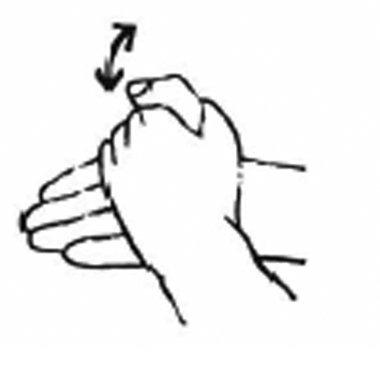
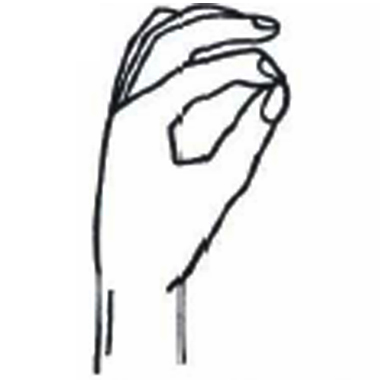
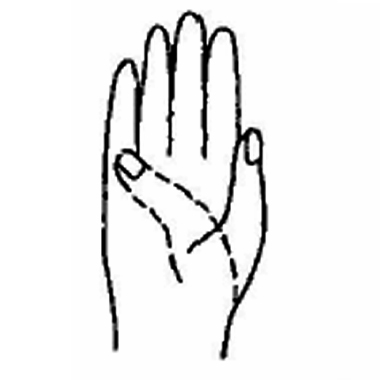

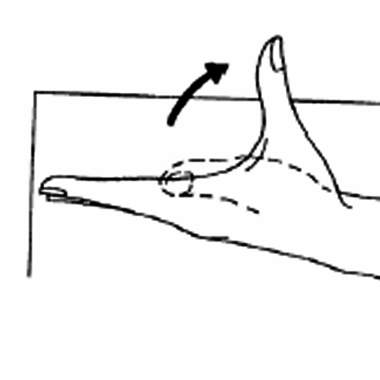
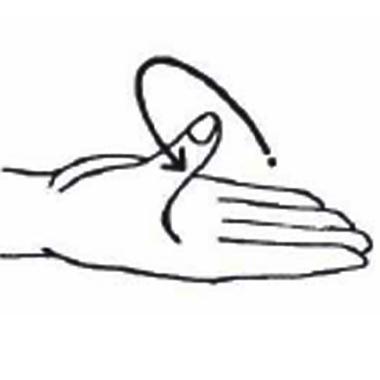
- Hold thumb below joint to be exercised. Bend and straighten the tip of your thumb. Then move your hand to support the next joint down and bend and straighten this joint.
- Put the back of your hand on the table. Bring your thumb to the base of your little finger and then bring your thumb back to the table.
- Touch each fingertip with your thumb starting with your index finger and working along to your little finger. Once you can reach your little finger slide your thumb down towards your palm
- Hold all fingers straight. Make a big circle with your thumb
- Place the little finger side of your hand on the table. Bring your thumb away from the palm (in line with the table) and then back to the index finger – like the action of opening your hand to pick up a glass.
- Place the palm of your hand on the table. Moving your thumb along the table bring it away from your index finger and back again.
What important advice should I follow?
- Do your exercises regularly as instructed during the day then rest completely between exercises
- Do not use your hand for anything other than your exercises until advised by your hand therapist
- Keep your hand elevated as much as practically possible to prevent swelling in your hand
- Move your elbow and shoulder through full range of movement every day to prevent stiffness in these joints
- Do not attempt to alter your splint – if you have concerns with how it is fitting please contact your hand therapist
- Keep your splint and wound dry using a plastic bag in the bath or shower
- Do not allow your splint to get hot as may change how it fits and become uncomfortable
- Stop or cut down smoking as this will help with your healing
- You will not be able to resume driving until at least 8 weeks following your surgery
- Do not play contact sports or heavy activities for 12 to 16 weeks
Please note this is only a guide and follow your individual hand therapist’s instructions.
Who should I contact if I have any problems?
If you have any problems or questions regarding your hand therapy please contact the hand therapy team on:
Patient experience
South Tees Hospitals NHS Foundation Trust would like your feedback. If you wish to share your experience about your care and treatment or on behalf of a patient, please contact The Patient Experience Department who will advise you on how best to do this.
This service is based at The James Cook University Hospital but also covers the Friarage Hospital in Northallerton, our community hospitals and community health services.
To ensure we meet your communication needs please inform the Patient Experience Department of any special requirements, for example; braille or large print.
T: 01642 835964
E: [email protected]